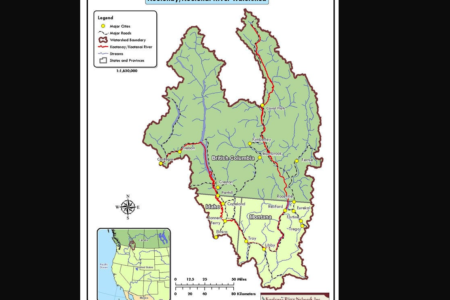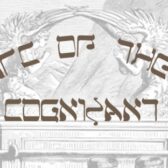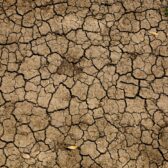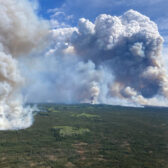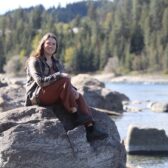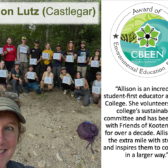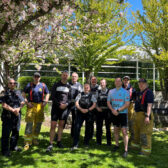Cattle and wolves: making beef part of the diet
By Andy Soos, ENN
Cattle ranchers in southwestern Alberta have suspected it for a long time and now, GPS tracking equipment confirms it: wolf packs in the area are making cow meat a substantial part of their diets.
University of Alberta researchers tracked wolves to bone yards, where ranchers dispose of dead cattle, and to sites of fresh cow kills. The study was done over two grazing seasons in 2008 and 2009.
The vast study area in southwestern Alberta includes private ranchland and wooded public lands bordering the Rocky Mountains. Researchers found that during the summer months when livestock was set out to graze on public lands, cattle made up to 45 per cent of the diet for the three wolf packs in the study.
This shows a seasonal switch from the wolf’s usual pattern of wild prey in the non-grazing season to cattle in the grazing season.
Four wolves in three different packs were outfitted with radio collars that included a standard tracking beacon and a device that collected and saved detailed GPS location data.
When the researchers used the radio signals to locate the general area of the collared wolf, the detailed, hour-by-hour GPS data showing the wolf’s movements was uploaded into a handheld device.
The researchers looked for GPS clusters, the locations on the map where the wolves spent a lot of time and went to a total 698 sites where the wolves had gathered. The fieldwork turned up locations where 50 cows were killed.
Researchers calculated that, during the winter months, 85 per cent of the wolves’ scavenged (already dead animals) feeding events were at bone yards located on land belonging to ranchers.
The researchers noted that often the bone yards were located within a few hundred meters of grazing cattle. The ease of feeding at bone yards can also attract other predators such as grizzly bears and cougars.
Wolves primarily feed on medium to large sized ungulates (sometimes 10 to 15 times larger than themselves), though they are not fussy eaters. Medium and small sized animals preyed on by wolves include marmots, hares, badgers, foxes, ground squirrels, mice, hamsters, voles and other rodents, as well as insectivores.
When such foods are insufficient, they will prey on lizards, snakes, frogs, rarely toads and large insects. In times of scarcity, wolves will readily eat carrion, visiting cattle burial grounds and slaughterhouses. Wolves will sometimes supplement their diet with fruit and vegetable matter.
In Eurasia, many wolf populations are forced to subsist largely on livestock and garbage in areas with dense human activity, though wild ungulates such as moose, red deer, roe deer and wild boar are still important food sources in Russia and the more mountainous regions of Eastern Europe.
Dr. Carita Bergman, an Area Wildlife Biologist with Alberta Sustainable Resource Development (SRD), says research in other regions shows that many wolves do not kill cattle.
An accurate tracking system would allow her to identify which packs may be responsible for depredation so that prevention and control measures can be targeted to those specific packs.
Limiting the loss of those wolves that are not causing problems is essential to allow wolves to fulfill their vital role in the natural ecosystem.
Better information on wolf movements can help ranchers prevent cattle depredation. “Proactive measures include moving cattle to a different pasture, running cow-calf pairs instead of yearlings in high-risk pastures, or changing the timing of when specific pastures are used,” said Bergman.
“Or if you have a pasture that you’re worried about, you could check it more often. The increased human presence may deter wolves from starting to kill cattle.”
Lead U of A researcher, Andrea Morehouse, said the most alarming element of the research is that almost 50 per cent of the wolf packs’ summer diet was cattle meat.
The researchers say this shows the need for management plans in the study area in order to reduce the opportunities for wolves to prey on cattle.
For further information: http://www.eurekalert.org/pub_releases/2011-03/uoa-gss032811.php





